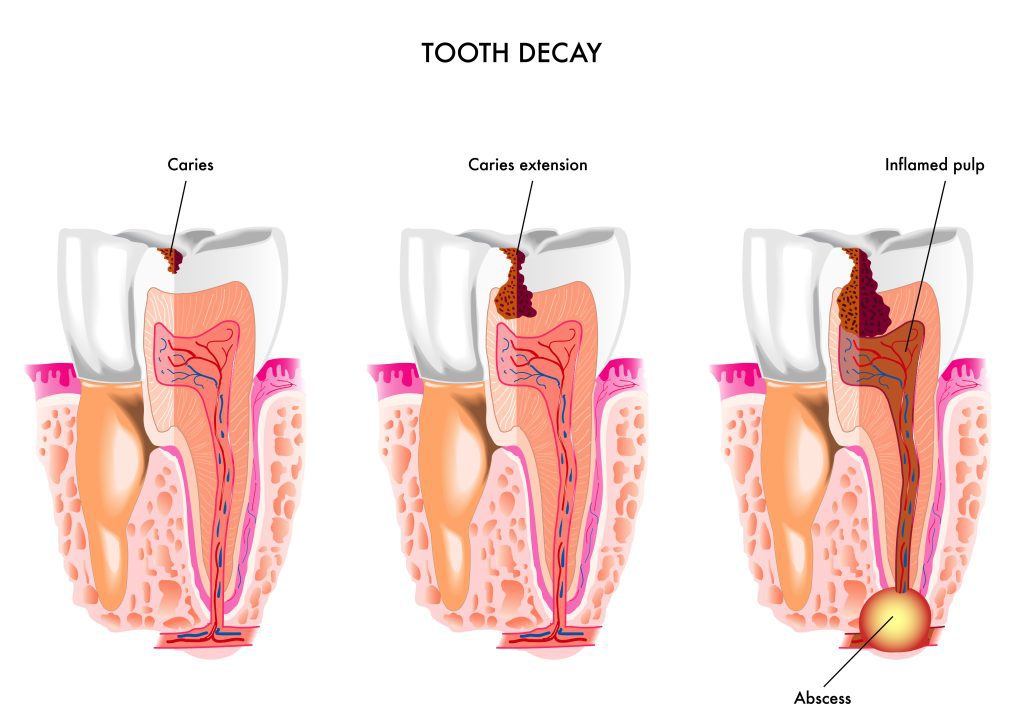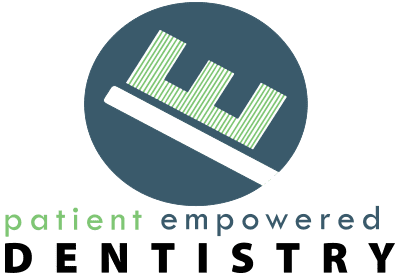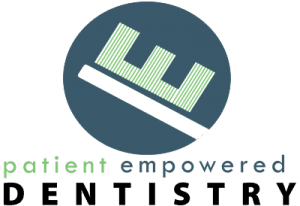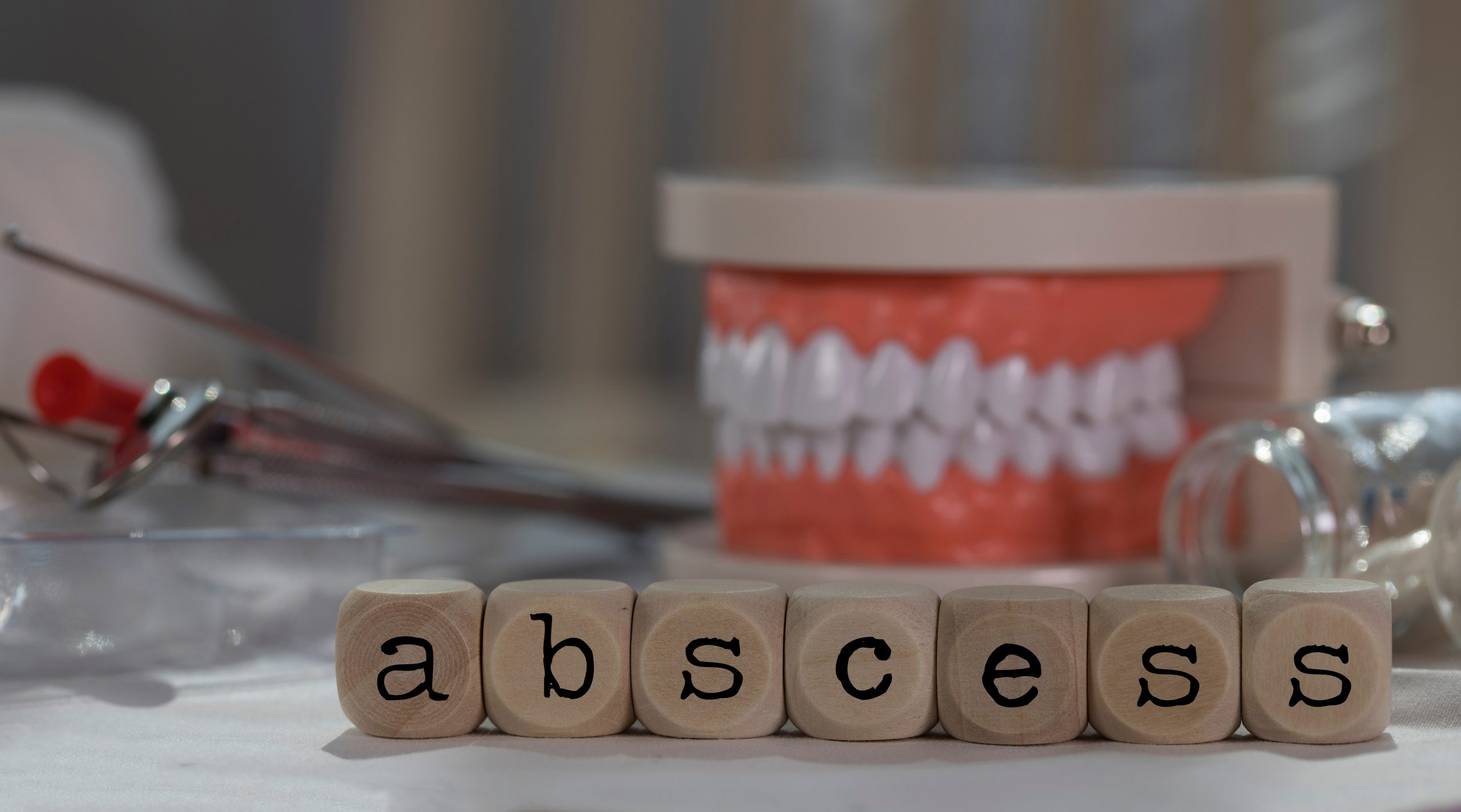A tooth abscess (or dental abscess) is an infection of the tooth caused by bacteria entering the root of a tooth or the tissue surrounding it, often resulting in serious pain, swelling, drainage, and damage to surrounding teeth. It can be highly uncomfortable and may even cause fever or other systemic symptoms, and it should be addressed as soon as possible. Fortunately, treatments are available to help manage the infection and reduce discomfort.
If you’re feeling pain in your teeth or gums, it’s important to understand what a tooth abscess is and how it can be treated so you can take steps to prevent further damage or seek out treatment options.
But what is a tooth abscess? What causes it? How can you tell if you have one? And what are the treatment options available? Keep reading to learn more about this serious condition and how to treat it.

What Is a Tooth Abscess?
A tooth abscess is an infection that affects the soft tissues inside your mouth, including the gums, upper or lower jaw, and the area around a tooth. It’s typically caused by bacteria that have spread from the mouth into the inner parts of the teeth and gums through lesions or cavities. The bacteria then multiply and build up in pockets within the soft tissue of your mouth or a deep cavity. This buildup of bacteria is referred to as an abscess.
In layperson’s terms, an abscess is a pocket of pus that forms around an area of infection and can cause intense pain, pressure, and swelling in the affected area. An untreated abscessed tooth can lead to other health complications when the infection has spread, such as facial swelling, a mouth fever, or even life-threatening conditions like sepsis.
There Are Three Main Types of Dental Abscess
Abscesses result from gum and tooth decay and are categorized based on where the infection spreads. If you have a tooth infection that you believe could be an abscess, when you see your dentist, they should be able to identify which type you have. Here’s a brief overview of the three main types:
Gingival Abscess
A gingival abscess is a pocket of infection in the connective tissue affecting the gums around a tooth and is caused by poor oral hygiene or conditions such as gingivitis. It can cause gum a bad taste in the mouth, gum redness, swelling, and pain in the surrounding tissue. Regular dental checkups and good oral hygiene can help prevent gingival abscesses.
Periodontal Abscess
A periodontal abscess affects the tissue surrounding the tooth’s root and can be caused by periodontal disease, trauma, or other underlying dental problems in the surrounding bone or gum tissue. A periodontal abscess can lead to throbbing pain, swelling, and sensitivity in the area and should be treated immediately.
Periapical Abscess
A periapical abscess is the most common type of tooth abscess and occurs at the tip of a tooth’s root. These abscessed teeth are caused when bacteria enter the soft inner pulp of the tooth, usually through a cavity or cracked tooth enamel. If a person doesn’t have this type of abscessed tooth treated by a dental health provider, it can cause severe pain and serious infection.
It’s essential to have an abscessed tooth diagnosed before the abscess ruptures and causes further damage to the gum structure or the periodontal ligament. Have your dentist determine the cause of the abscess and provide dental treatment to reduce or eliminate the tooth infection.
What Causes Tooth Abscesses?
Tooth abscesses are usually caused by a bacterial infection that develops in your tooth’s inner pulp. This gum or tooth infection can happen due to tooth decay caused by improperly removing food and drink remnants when you brush your teeth, trauma such as a chipped tooth, or anything else that leaves the root exposed or the gum line vulnerable to bacterial infections.
A tooth abscess occurs when the pulp of your tooth dies because of this decay or trauma. The living tissue inside the hard outer shell of your teeth contains blood vessels and nerve endings that help keep your tooth alive. When this tissue dies, bacteria can build up in the center of the affected area, forming an infection called an abscess. This infection can spread to other areas of your mouth if left untreated for too long.
Bacteria can also access the tooth’s inner layers through injuries or dental work that has not been properly sealed. In some cases, an abscess can develop due to bacteria entering through cracks in a damaged filling or crown. These are just some reasons the American Dental Association states that it is important to see your dentist regularly for checkups and cleanings.
Symptoms of a Tooth Abscess
The most common symptom of a tooth abscess is intense pain. Pain may be localized directly at the site or radiate throughout your entire face and jaw area. This pain can range from mild to severe and may be accompanied by swelling or redness around the site of the infection. This intense pain may increase when pressure is applied to the area around the infected tooth.
You might also experience fever, difficulty swallowing saliva or food, swollen lymph nodes near your jawline, difficulty opening your mouth due to joint pain or stiffness, and sensitivity to hot or cold temperatures on the affected side of your face. Bad breath or taste may also indicate an infection lurking beneath the surface. In extreme cases, an abscess can lead to facial swelling or pus draining from the mouth if left untreated for too long.
Treatment Options for Tooth Abscesses
The best course of action for treating a dental abscess will depend on how far advanced it is and how much damage has been done to your teeth or gums. If you have any signs or symptoms indicating an abscessed tooth, you must see a dentist immediately for treatment. The goal of treatment for an abscessed tooth is to reduce inflammation and alleviate pain while preventing the further spread of infection.
If caught early enough, treatment will usually involve your dentist prescribing antibiotics to reduce inflammation and kill off any remaining bacteria in your mouth; however, this will only address the infection itself—not necessarily the underlying issue causing it (e.g., cavities). Additionally, your dentist may recommend over-the-counter pain medications such as ibuprofen to help ease any discomfort associated with a dental abscess until it can be addressed directly at your next appointment.
It’s important to have your dentist fill any cavities and repair any damage in fillings or crowns as soon as possible after receiving antibiotics for an abscessed tooth. However, if extensive damage is present, more intensive measures may be taken, such as a root canal treatment or extraction of the affected tooth. Depending on the severity of your condition, your dentist may recommend these additional treatments only be taken care of after the infection has been cleared. It is important to follow your dentist’s instructions and complete any prescribed treatments to prevent the further spread of infection and restore the health of your mouth and teeth.
In more severe cases where antibiotics won’t be enough on their own to clear up an infection quickly enough (e.g., if there is significant damage), surgery may be required to remove damaged tissue from around the affected area and/or drain out pus-filled pockets to help reduce inflammation quickly enough before any additional complications arise from spreading infected material into other areas of your body (such as sepsis).
If you think you have a tooth abscess, it’s vital to seek professional medical attention as soon as possible.

How Can I Treat My Tooth Abscess at Home?
The most effective treatment is having a dentist prescribe antibiotics and draining any accumulated pus to reduce swelling and pressure on surrounding tissues. Root canal therapy may sometimes be necessary to remove infected material from inside the affected tooth. There is no replacement for a dental health provider in this case, as they are the only ones with the knowledge and expertise to diagnose and treat an abscessed tooth properly.
At home, however, you can take a few steps to alleviate any symptoms of discomfort associated with a dental abscess before visiting your dentist:
Rinse Your Mouth
Flush your mouth three times daily with warm saltwater rinses – this will help reduce swelling and pain while cleaning out any bacteria in your mouth. You can make a saline solution at home by combining one teaspoon of salt with 8 ounces of warm water.
Apply Cold Compresses
Apply a cold compress to the side of your face where the abscess is located – this will help reduce inflammation.
Medicate
Take over-the-counter medications for pain relief, such as ibuprofen or acetaminophen, to help ease discomfort until you can get professional treatment.
Avoid Triggers
Avoid foods and drinks that are hot or acidic, as these can further irritate the affected area.
Keep it Clean
Practice good oral hygiene by brushing twice daily with a soft toothbrush and flossing once daily to help reduce bacteria in your mouth.
Seek Emergency Care
If you have difficulty breathing or swallowing, seek emergency medical attention immediately. It is important to note that this is a serious infection that can cause significant damage to your other teeth and other areas of your body without treatment. If your dentist doesn’t keep emergency hours and you feel that the infection has spread, the emergency room is your best option for care.
These measures help alleviate some of the symptoms associated with an abscess. However, it is still essential to seek professional medical attention as soon as possible to prevent further damage from the main symptom: the spread of infection.
Can I Prevent a Tooth Abscess?
The best way to prevent a tooth abscess from forming is by regularly visiting your dentist for professional checkups and cleanings. This will help identify any areas of decay or damage in your teeth that may lead to an abscess in the future. Additionally, practicing good oral hygiene at home, such as brushing and flossing twice a day, can help reduce bacteria in your mouth and prevent the condition from spreading.
It is also essential to keep up with regular dental visits so that any cavities or other areas of decay can be treated quickly and effectively to avoid the formation of an abscess.
Finally, taking steps to reduce your risk for other dental issues, such as gum disease or tooth trauma, can also help lower your chances of developing a tooth abscess. This includes eating a healthy diet, avoiding excessive sugar and acidic foods, quitting smoking, and wearing a mouthguard when participating in contact sports.
By following these steps, you can help reduce your risk of developing an abscess and maintain the health of your teeth and gums.
What Happens if a Dental Abscess is Left Untreated?
An untreated abscess can lead to serious and potentially life-threatening complications. The infection can spread to other areas of your body, such as the lungs or brain, which can cause sepsis — a severe bloodstream infection that can be fatal without prompt medical attention. Additionally, it can cause further damage to the teeth, gums, and jawbone and contribute to a weakened immune system if not treated promptly.
It is crucial to seek professional medical attention as soon as possible if you have an abscess. Early treatment can help reduce your risk of developing long-term complications or further damage to your oral health.
Dental Abscesses Can Be a Serious Bacterial Infection That Requires Prompt Medical Attention
While painful and uncomfortable, understanding what causes a tooth abscess—and what options are available for treating it—can help ensure you get prompt treatment should you ever experience one yourself. Remember that seeing a dentist at once if you suspect you have an abscess is essential for successfully resolving the infection and any underlying issues causing it (e.g., cavities). Additionally, following through with all recommended treatments until fully resolved can help ensure that no further complications arise from leaving some residual infected material behind after treatment is complete (e.g., sepsis).
Suppose you experience persistent pain despite having seen a dentist about it recently and still believe that you might have an abscessed tooth. In that case, it’s always best to err on the side of caution by returning in case additional treatments are necessary beyond what was already provided for your restored tooth! Don’t ignore persistent oral discomfort – visit your dentist right away!
Call Patient Empowered Dentistry today and book an appointment with our experienced doctor to get the care you need! Our team will work hard to ensure that your oral health is restored and maintained. We look forward to helping you achieve a healthy, beautiful smile!



